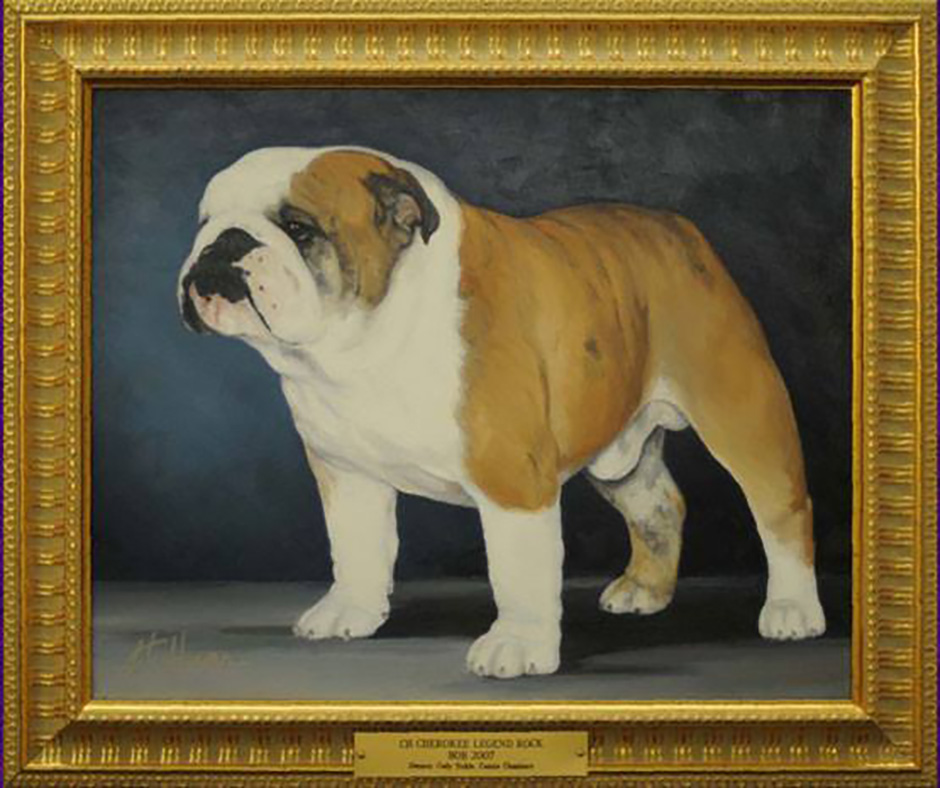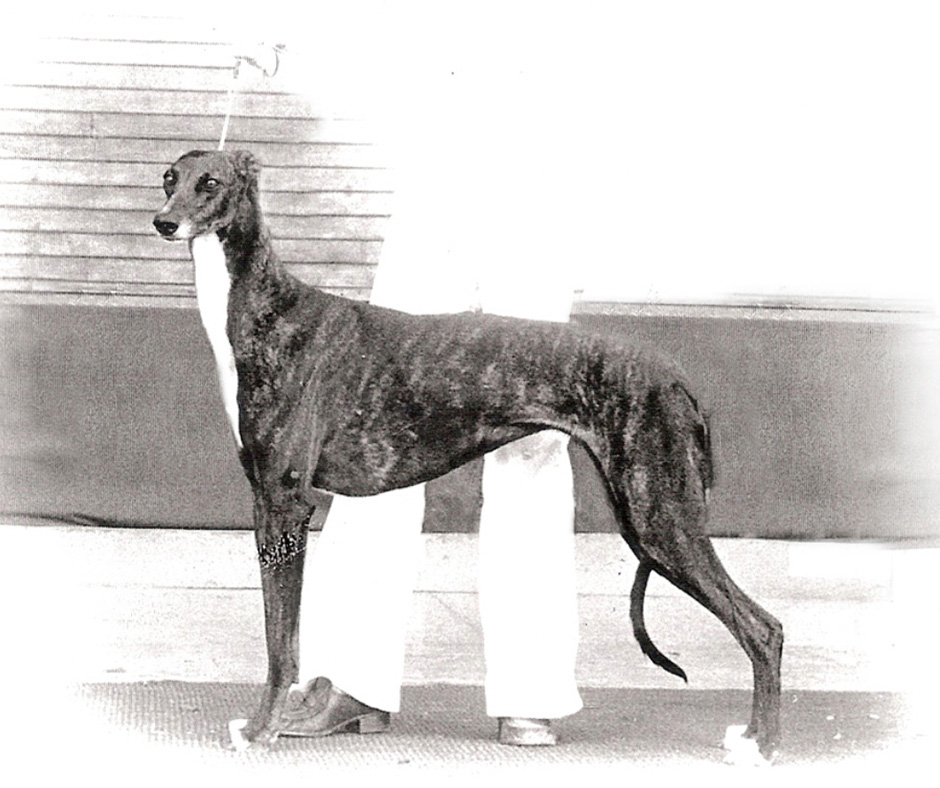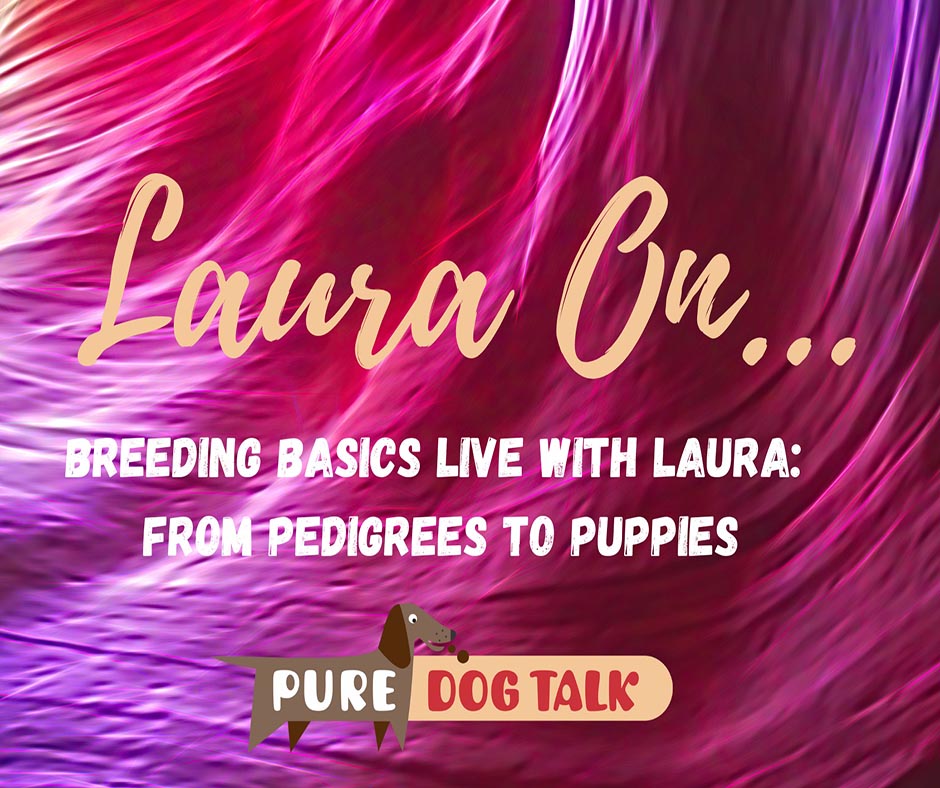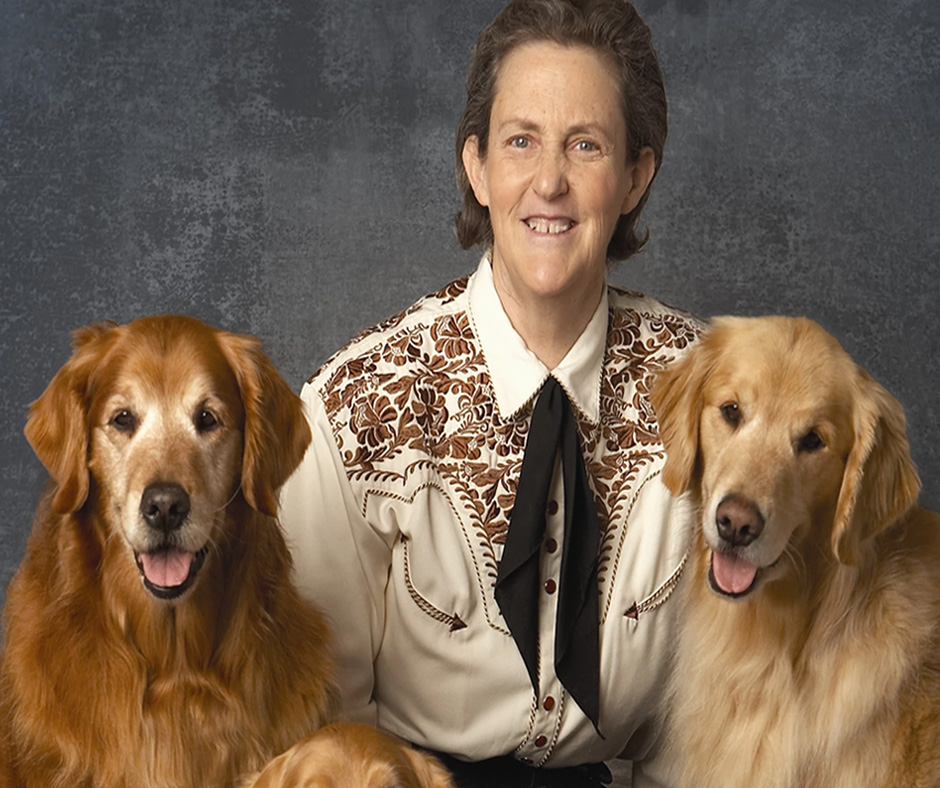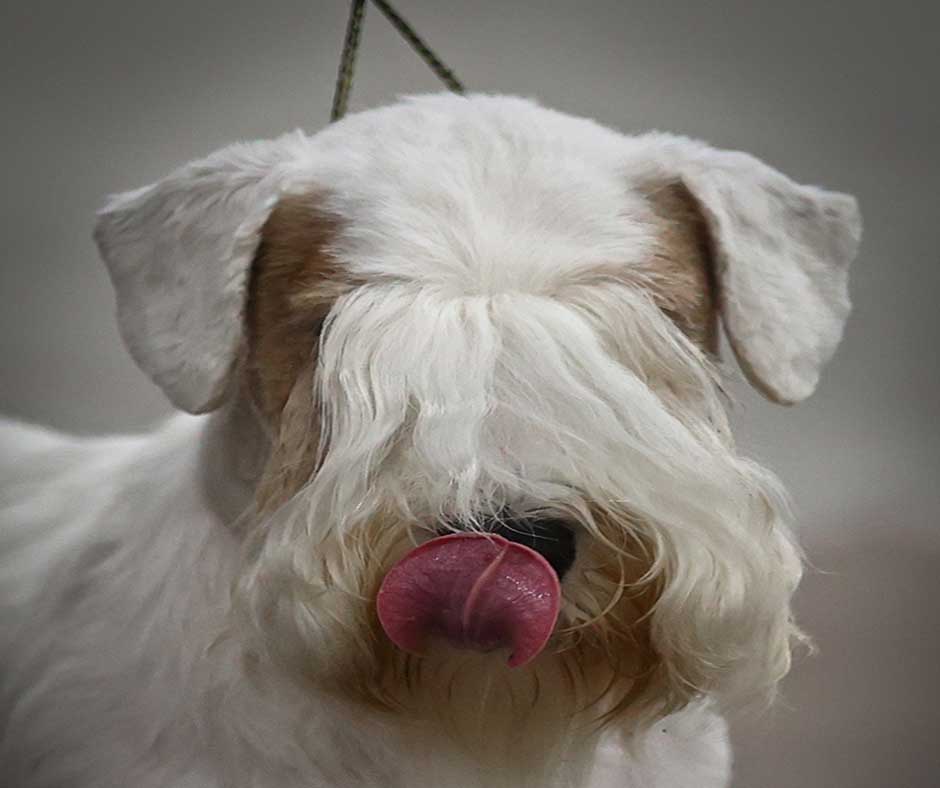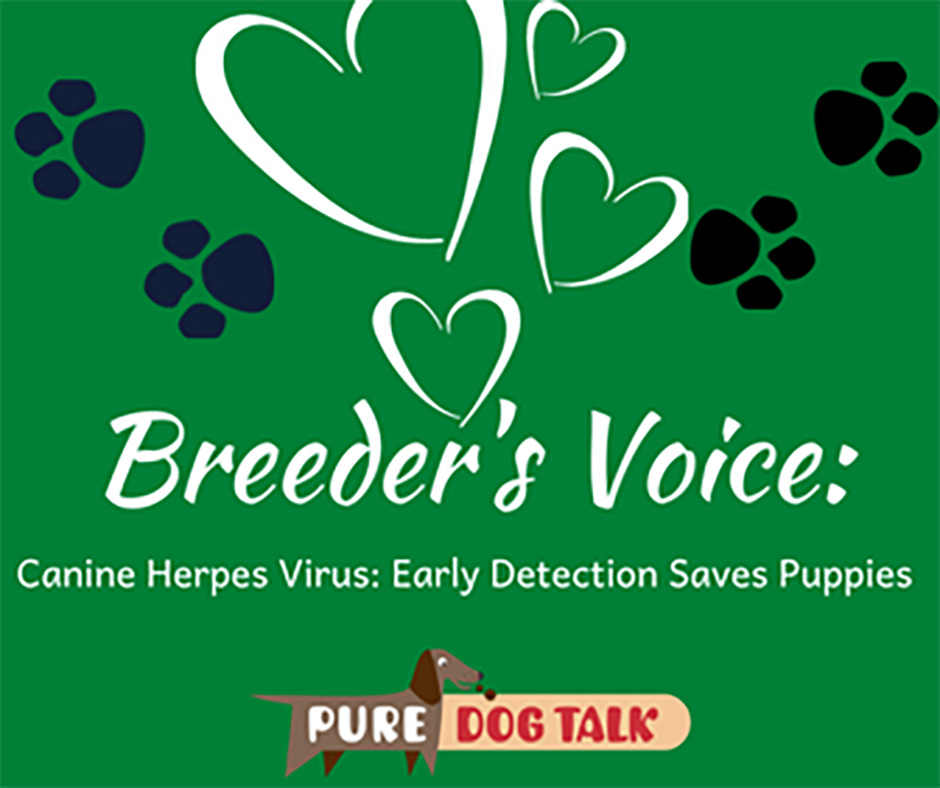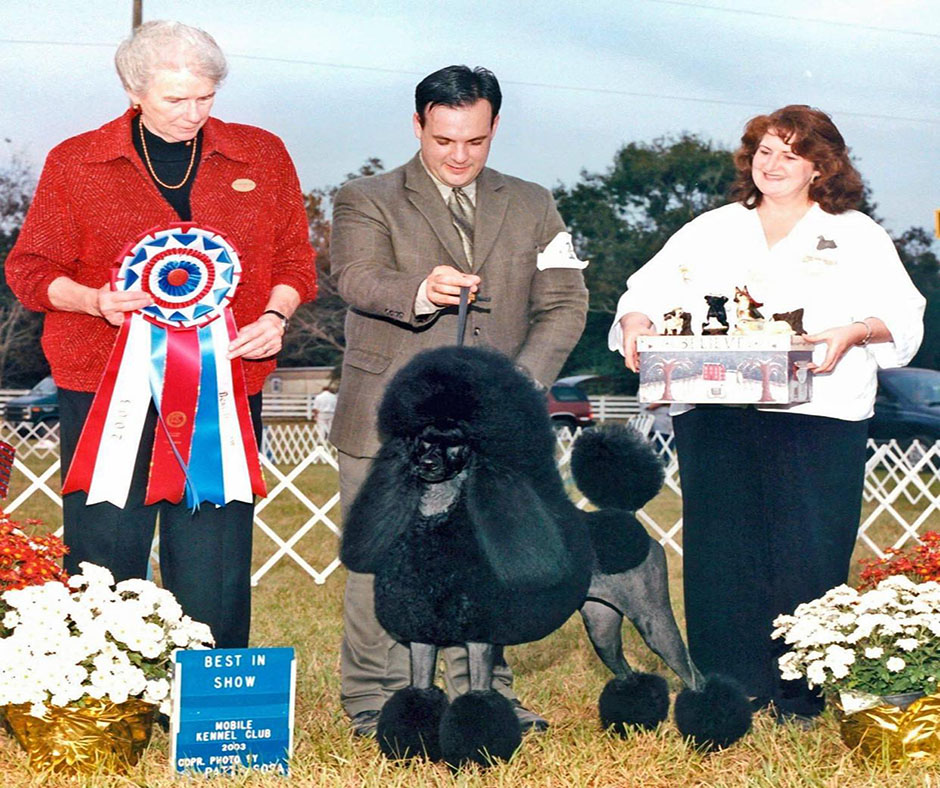654 – Corporate Takeover of Veterinary Clinics
Corporate Takeover of Veterinary Clinics
Dr. Marty Greer joins host Laura Reeves for a very current conversation about corporate takeover of veterinary clinics.
“The trend to purchase veterinary clinics has been going on for probably about 12 to 15 years,” Greer said. “It started with just a couple of consolidators. It’s now up to about 80 and some of the consolidators have consolidated. So we now see some of these groups recapitalizing and then moving on and being sold to another consolidator.
“So it’s been kind of interesting to watch and frankly pretty scary. Just before COVID, the prices of veterinary clinics were at an all -time high, and then it dropped during COVID.
“They tell you that they will give your staff better benefits, and they probably do. They tell you we will unload all that stuff off of you that you don’t want to deal with. The HR, the purchasing, all the back-office stuff that you as a veterinarian didn’t go to vet school for, didn’t learn in vet school, don’t want to learn, don’t want to know, don’t want to deal with.
“They’ll say we’re gonna lift all this off your shoulders, you can just practice medicine, it’s gonna be awesome. And if you’re a large producer in the practice, the owner or one of the bigger producers, they want you to stay for two years.
“It has different impacts in different practices. The practices that we’ve really watched the most closely personally are the practices that have done a lot of reproductive services in our community, either in our immediate area or across the country because these are colleagues of ours.
“And that to me has been really hard to watch because a lot of the practices have not continued to thrive after the sale of the practice.”
Marty and Laura continue with a conversation about how breeders can work with the larger community to help change the conversation about dog breeding that trickles down to the people who become veterinarians.
650 — Breeding a “Star” requires depth of knowledge
Breeding a “Star” requires depth of knowledge
Join host Laura Reeves for part two of her conversation with Cody Sickle, Cherokee Legend Bulldogs, breeder of Star, GCH Cherokee Legend Encore, BIS at the 2022 AKC National Championship.
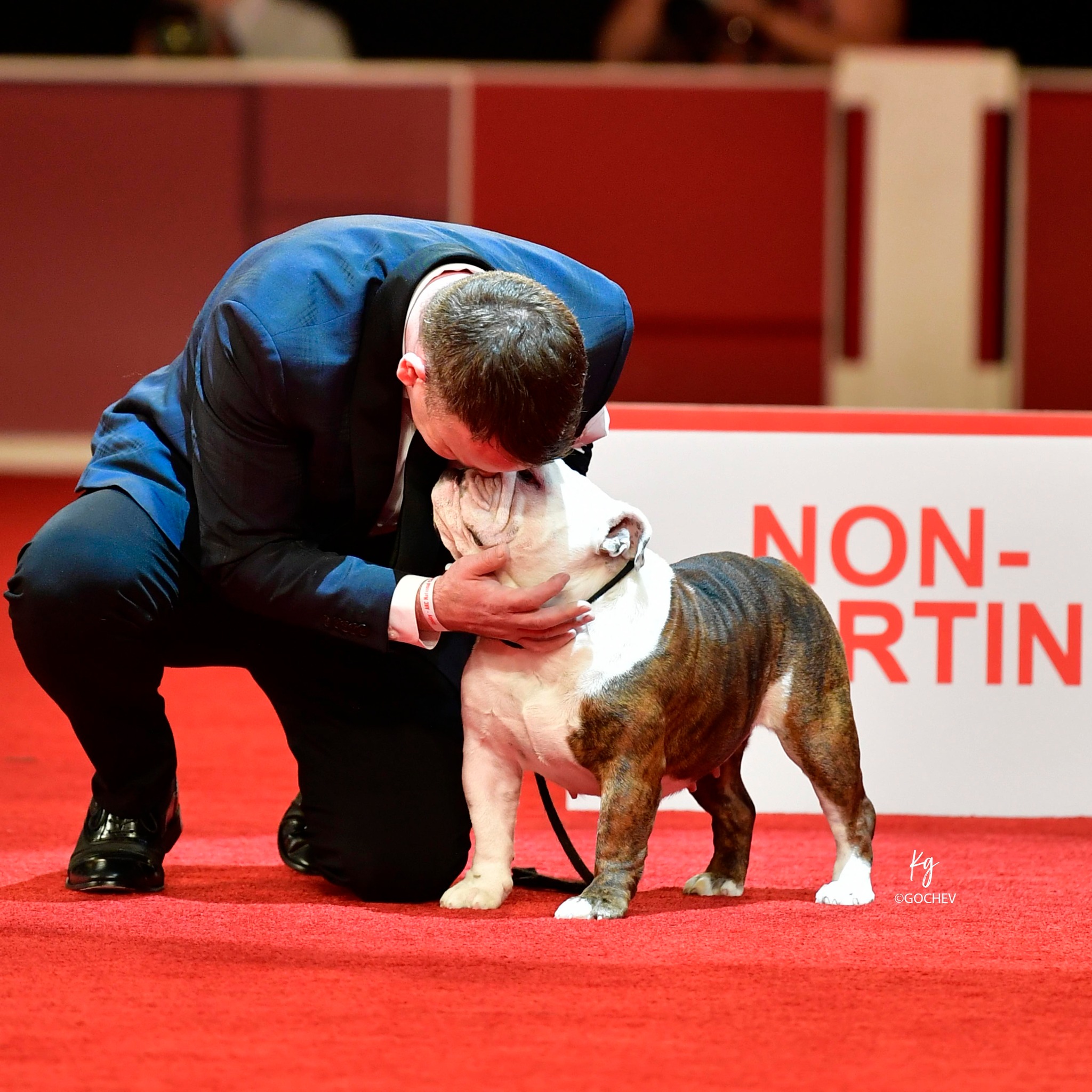
GCH Cherokee Legend Encore, “STAR”. Breeders-Cody T Sickle, Connie Chambers and Sherry Hazelett
Owners- Alaina Moulton, BJ Whitlow, and Kevin & Natalie MasonLe
“I think there’s a lot of things to think about in breeding,” Sickle said. “I think one of the things to really focus on in breeding is watch what everybody else is doing. Just like in picking puppies, knowledge makes a difference. Knowledge makes a difference in this too. Look who’s breeding successfully.
“I think most breeders would actually be better if they never owned a stud. Because I don’t think most breeders have the fortitude, the self-control, not to think they’re going to make their own stud famous. I think the best breeders think in terms of ‘I don’t care who owns this dog, if I think there’s a stud out there that will improve my breeding program, even if I don’t care for the people that own the dog at all, doesn’t matter. I’m not marrying them, I’m breeding to their dog’.
“And when you do a breeding, be honest about it. When I do a breeding, I don’t have the idea that, well, I’m going to keep the best this or that out of the breeding. I don’t think of that. I’ll keep the best out of it if it’s good enough. But just because it’s out of two dogs that I have a high regard for if the puppies aren’t good enough, move on.
“We will frequently do grandfather to granddaughter breedings. I’ve only once done a brother and sister breeding. And it turned out to be wonderful, but they were the only brother and sister I’ve ever seen in our breed that I would have considered breeding together.
“We’ve been fortunate to have good studs. And a good measure of that is the last 40 years for the national specialty at least one Cherokee stud is behind every single breed winner. And that impresses me. And a lot of the record stuff doesn’t impress me.
“I think the future of Bulldogs in general is good. Bulldogs are a wonderful family dog. Not every family, you know, if you’re a family of athletes who’s going to go out running the marathon every weekend, Bulldog’s not the right dog. If you want a dog that is going to be a terrific family pet, love everybody, get along with everybody. A bulldog is an excellent dog. They’re just nice dogs.
“I think we are so fortunate to have the sport of dog shows. For a lot of us, it’s a major part of our lives and has been for the major part of our lives. But I like the dogs, I like the competition, I like the people, I like the camaraderie. There’s no place that I feel more comfortable than a dog show, and that’s because of the people for sure, and as much complaining as we see on social media, I think it’s a wonderful sport.”
642 – Espen Engh Offers a Master Class on Dog Breeding
Espen Engh Offers a Master Class on Dog Breeding
Famed Norwegian Greyhound breeder and judge, Espen Engh, is back with host Laura Reeves offering a Master Class on dog breeding.
“When we started out, there was a combination of two very different British strains that had proven that it worked really worked,” Engh said. “Those two breeders were at the end of their career and they hadn’t mixed their dogs a lot while they were still active. But some very clever breeder very quickly found out that combining those two lines worked extremely well and produced dogs that had been almost unheard of before truly high quality.
“So we collected different crosses between those two lines to combine our own strain to start out with. And I do think it helped a lot that my mother had been active in the breed for 20 years before breeding the first litter. She had been judging for many years as well. We didn’t have to do a lot of the beginner’s mistakes. So from day one, we were able to start at a high note.
“When the breeder repeated (that successful breeding of two disparate lines) by luck or persistence, we were able to buy what we considered to be the best bitch in that repeat litter. And she turned out to be just as good as or probably better than those puppies from that first combination. So we were able to start with a really phenomenal bitch.
“We had a phenomenal male at the time too. He was runner up top dog all breeds in Norway. And maybe if we were amateurs, or if my mother was an amateur, we would have bred those two together, but they didn’t really fit. We would double up on faults. The male turned out not to be a good stud dog at all. And we had lots and lots of litters for other breeders. We never used him. So rather than using that top winning really beautiful dog, which didn’t fit the bitch, we didn’t do that from the start.
“So our first combination was quite successful and we got an outstanding bitch in that first combination. And then we quite quickly realized that in order to progress, you know, now we have like two generations of phenomenal bitches, we would never be able to be big breeders number wise. We didn’t have a big kennel, we didn’t have the style, the facilities to breed dogs on a large scale. So we had to make a system where you can actually breed successfully from a limited number of dogs.
“And I thought, why not just base it on breeding from the very best bitch of each generation? And that’s what we did. When we were at the most active, we would have three or preferably four litters from the very best bitch of each generation.
“As Greyhounds are very fertile, you’ll get an average of like 10 puppies or nine, 10, 11, 12 puppies. Each of those top bitches would then have 20 daughters to choose from. I mean, in every litter, we would keep all the bitches that were thought were good enough. Most of them never just one, two or three. And we’d run them on until they were fully grown so we would know for sure who was the best. And selected the best bitch of each generation and repeated that.
“Now, if the mother is great, the grandmother is great and the great -grandmother is great, you’re very likely to get the really good one out of 20 bitch puppies, aren’t you? But We also need some males to breed them to.
“We also chose the second-best bitch in the generation. Remember the mother had four litters, she would be bred to four different males. We selected the second-best bitch from each generation, preferably a half-sister to the main bitch, which I call the alpha bitch. So the second best bitch, the beta bitch, we would try outcrosses on her.”
632 – Expert Tips for Expanding Puppies’ Minds
Expert Tips for Expanding Puppies’ Minds
Dr. Marty Greer, DVM joins host Laura Reeves for their ongoing conversation about raising puppies. This month they’re talking week four, when the puppies’ minds are exploding with new sensory input.
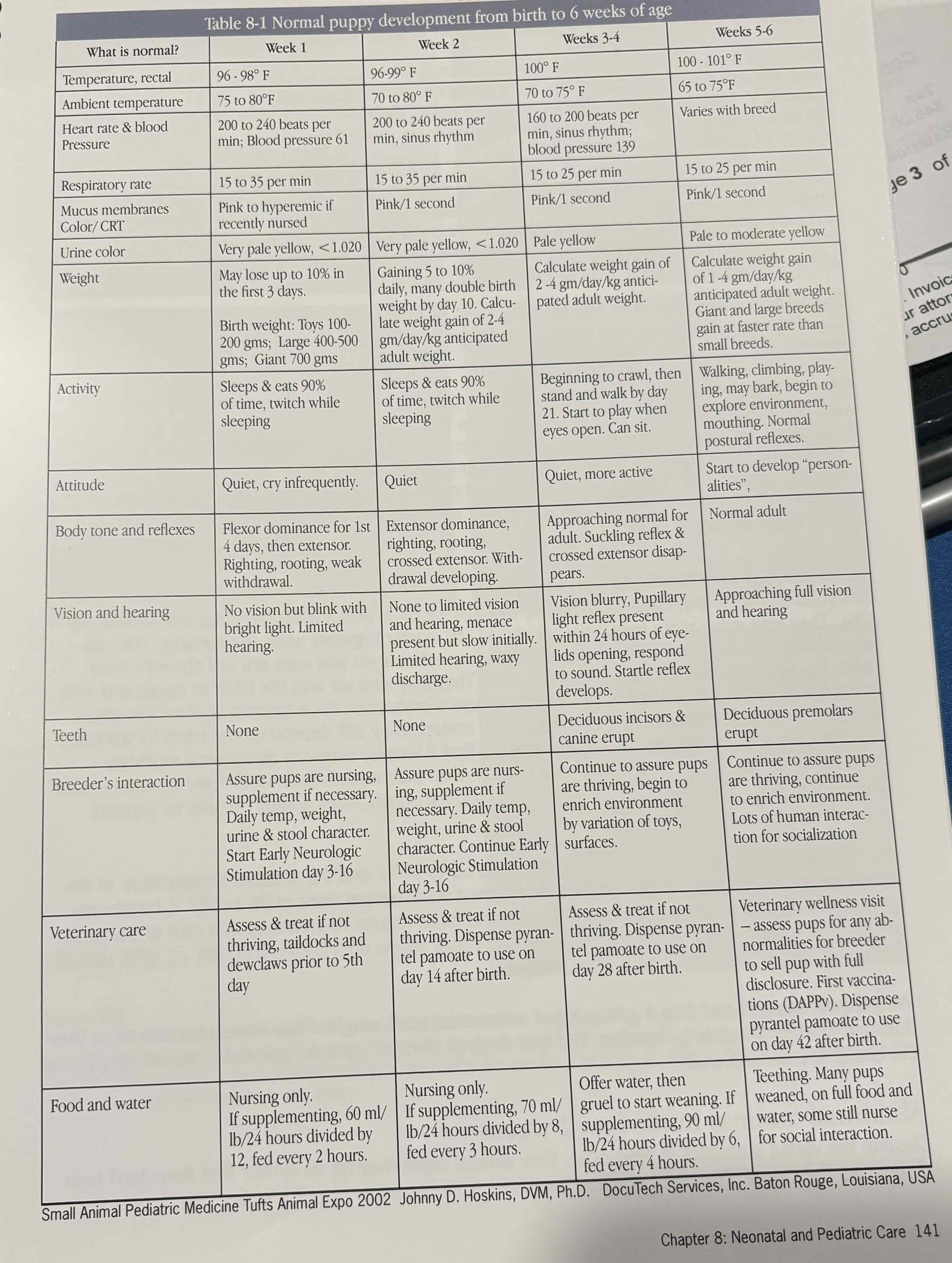
From Dr. Greer’s “Canine Reproduction and Neonatology”
“When the puppies first open their eyes, first open their ears, we should have gentle lighting, we should have gentle sounds,” Greer said. “We shouldn’t just have this loud TV with Rambo on. So, you know, things like just have the lights starting to come up, their vision isn’t great, their hearing isn’t great, but it went from almost nothing to something and so we want to ease them into that world.”
Four weeks is when many puppies are introduced to solid food. Mothers of wild canids vomit for their puppies as their introduction to solid food. Laura describes making puppy food the “consistency of dog vomit.”
Marty recommends shallow water bowls for puppies to prevent drowning hazards, as well as Lixit bottles for smaller breeds.
100 experiences in 100 days
“I try to do a lot of variation in the enclosure. I have a rabbit hutch that’s got a two story ramp on it so they can go in and out of doors and up and down the ramp. I have all kinds of little beds that have holes and places for them to go. Honestly the best toys are the kids’ toys that I pick up at garage sales. So you pick up, you know, baby walkers and all kinds of toys and they’re brightly colored and they’re hard plastic. They’re not durable enough for the aggressive chewer or adult dog. So you probably don’t want them in with mom if you’ve got a lab that eats everything, but they’re fun. They make interesting noise and you can do variability.
“I think both Sophia Yen and Ian Dunbar, veterinarians that talk a lot about behavior and development, talk about a hundred experiences in a hundred days.
“I have a series of 11 bath mats that are all different sizes, shapes, colors, textures. The mesh ones I put under the puppies when they’re really young because the urine runs through and so they stay dry. When you’re in that transition period between when mom stops cleaning them, that two to four week transition period when they start urinating on their own, they stay dry and it doesn’t soak into a pad directly on their skin so it’s cleaner and neater.
“And those again can go in the washing machine. But I went to Walmart during COVID and they had 11 styles of bath mats. They had some with bristles, they had some that were shiny, some with round holes, some with square holes, some were dark colored, some were light colored. Just this whole variety and again I throw them in my washing machine when they get soiled and then I hang them to dry. And I have two sets so that they can rotate through. And you’ve just given now a puppy 11 different surfaces, so of the 100 experiences you need to do in 100 days, you just did 10 percent of them, with a bath mat.”
594 – Temperament Testing for Better Puppy Placements
Temperament Testing for Better Puppy Placements

Hannah Crane, National Puppy Program Manager for Dogs for Better Lives.
Hannah Crane, National Puppy Program Manager for Dogs for Better Lives, joins host Laura Reeves to take a deep dive on temperament testing for better puppy placements for all breeders. While Crane uses the system to test puppies going in to service work for her organization and others, she discusses why all breeders can follow the protocol to help make the best possible matches for puppies and buyers.
“Temperament tests are exactly how they sound,” Crane said. “They help us to assess and identify any temperaments that the puppies are showing us in a litter. Are we looking at a puppy who is confident and calm in any environment? Are we looking at a puppy who is maybe shy or reserved, unsure of their surroundings? It really helps give us a snapshot in time, what that litter is showing as well as the individual puppies.
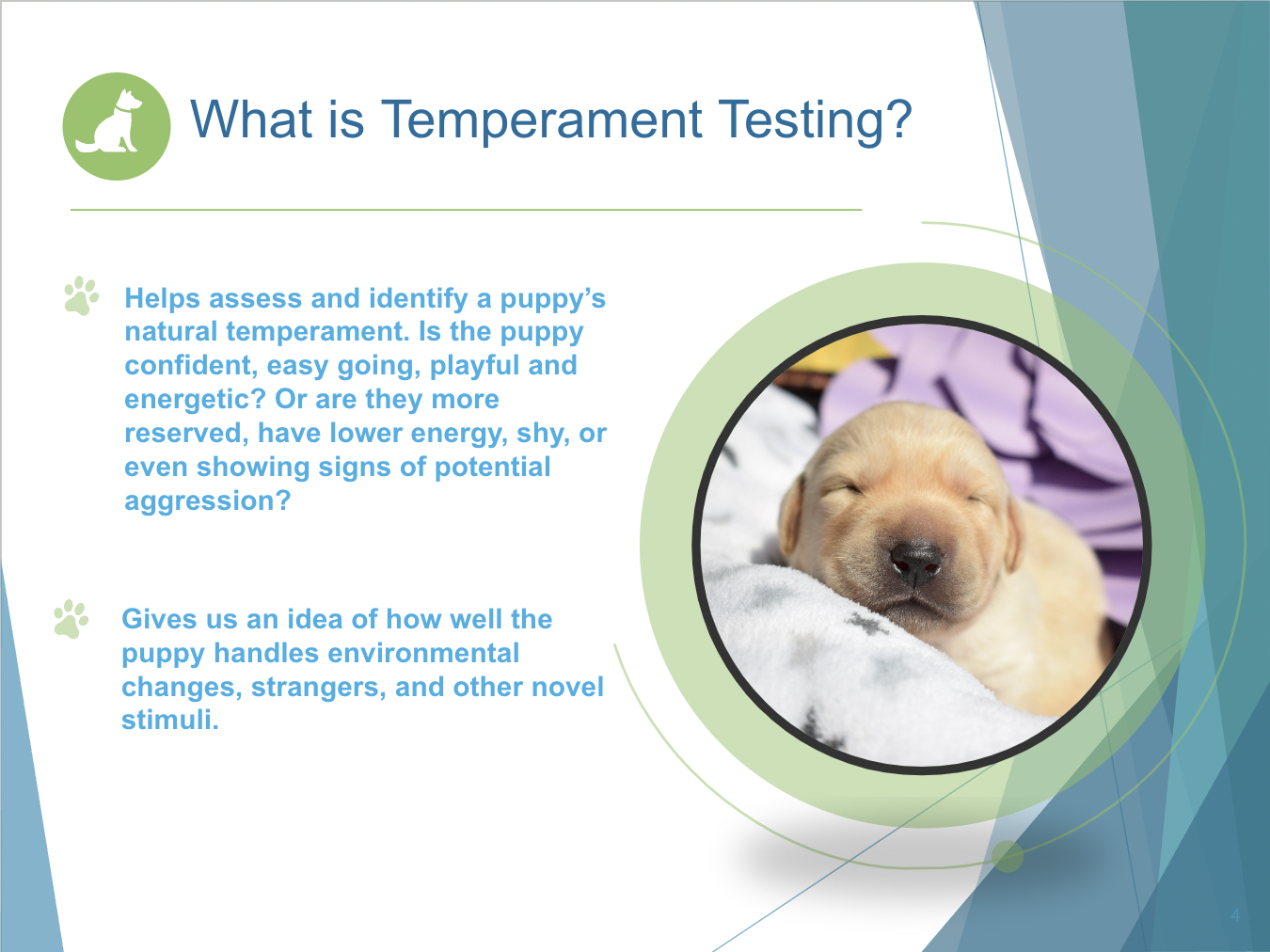 “We get to look at each puppy and the litter as a whole because that’s great data for our breeders. We can see what’s trending. The particular test that we use helps us to see how the puppy reacts to different environments and how it reacts to different people, different stimuli, novel objects and also different stressors.
“We get to look at each puppy and the litter as a whole because that’s great data for our breeders. We can see what’s trending. The particular test that we use helps us to see how the puppy reacts to different environments and how it reacts to different people, different stimuli, novel objects and also different stressors.
“Typically, you wanna do them between seven and eight weeks old. That’s really the prime time to do it. If you’re being really picky, 7 1/2 weeks old is prime. You’re right at their sponge stage. They’re really coming into their own behaviors in the litter, finding their social status as well as right before they go into their first fear period, too. And that’s essential.
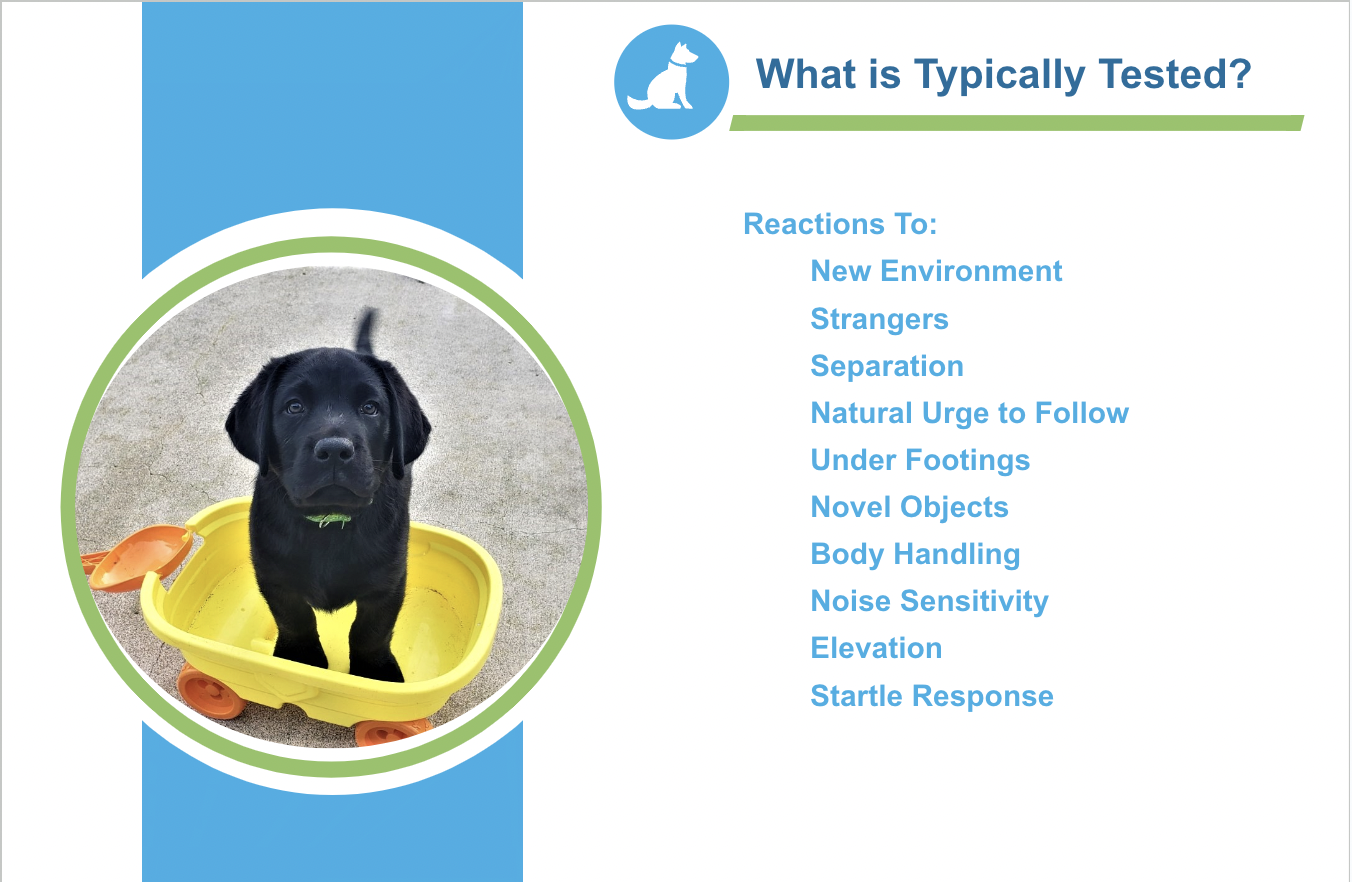 “(Temperament testing is) great for private breeders as well. For you guys to be able to identify which puppies will be successful in a private home or a show dog home or a sport home, I mean our ultimate goal both of us, you know, whether you’re a school or a private breeder, the ultimate goal is to set up these puppies for success, to set up our families and our clients for success. We want that puppy or dog to stay in that home for the rest of its life. This is how we do that.”
“(Temperament testing is) great for private breeders as well. For you guys to be able to identify which puppies will be successful in a private home or a show dog home or a sport home, I mean our ultimate goal both of us, you know, whether you’re a school or a private breeder, the ultimate goal is to set up these puppies for success, to set up our families and our clients for success. We want that puppy or dog to stay in that home for the rest of its life. This is how we do that.”
591 – Breeding Basics LIVE with Laura from Pedigrees to Puppies
Breeding Basics LIVE with Laura from Pedigrees to Puppies
Host Laura Reeves takes the LIVE audience through breeding basics, reading pedigrees, health testing, phenotype vs genotype and more. This journey through the theory side of breeding, covers important topics for breeders from novice and intermediate to advanced.
- Use the resources of older breeders who knew the dogs and they will also be able to talk about traits that genetic testing and COA does not give you.
- This is an art and a science, and part of the art is finding your mentors and being able and willing to talk to a lot of different people. Not just the same people all the time. Not everybody has all the answers.
- One of the things that makes purebred dogs purebred is a level of inbreeding. That’s what makes it purebred. Having a higher or lower level and how you use that and the healthy genes that you’re doubling up on or the unhealthy genes that you’re doubling up on make an enormous difference in your breeding program going forward.
- We have to think about the process that we intend to follow and it’s ideal if you can create a plan. Is your plan to do consistent inbreeding? Maybe that’s not such a great idea. Consistent line breeding? That’s probably pretty safe. Consistent outcrossing is really safe from a certain perspective. In terms of health, you’re not as liable to double up on a particular recessive, but at the same time, I can tell you from personal experience every single time I go out to get one thing, I get three things I did not want. So, balancing those three breeding theories is absolutely critical to your mission in your breeding program and knowing what you will consider and what you want and how you plan to get where you’re going when you start.
- We’re trying to build on this concept of “I have a stated goal. I have written it down. I have cemented it in my brain.” And I have had a very careful evaluation of the bitch that I’m working with. My foundation bitch. I know what I want to improve upon in her. I know what I will not give on, what I will give on and what is not a concern. Those are the kinds of questions that need to be addressed as you’re getting started deciding if and when to breed your dog, male or female.
- Genotype is the pedigree that’s what talks about the actual genetic involvement in each individual dog. Phenotype is what does the dog look like? When you make breeding decisions, whether you breed on a pedigree or whether you breed on dogs that look alike, no matter what their genetics are, no matter what pedigree is behind them, is, in my opinion, sort of a personal decision. I personally am a genotype freak. I am a pedigree guru. I love it. I research it. I live and die by it. And yet I know there are lots and lots and lots and lots of people out there who breed on phenotype. I want a dog that looks like this. And this is what my dog looks like I think this is what the breed looks like I want another dog that looks just like this.
Hear more of this insightful, targeted conversation by listening to the entire episode above.
578 — Temple Grandin to Headline NAIA Conference in Portland
Temple Grandin to headline NAIA Conference in Portland
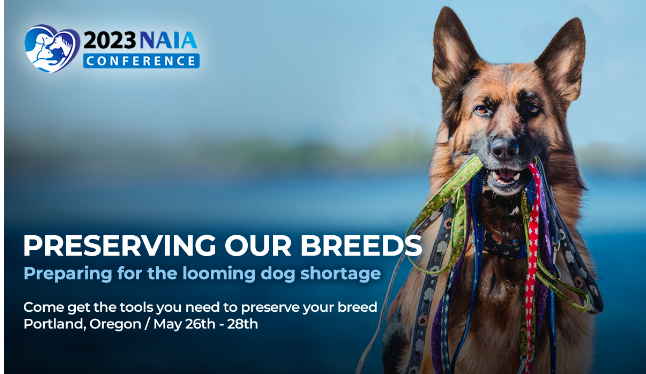 Patti Strand, founder of the National Animal Interest Alliance (NAIA) joins host Laura Reeves to discuss the lineup of speakers at the conference scheduled for May 26-28 in Portland, OR.
Patti Strand, founder of the National Animal Interest Alliance (NAIA) joins host Laura Reeves to discuss the lineup of speakers at the conference scheduled for May 26-28 in Portland, OR.
The annual NAIA conference kicks off under the banner “Preserving Our Breeds: Preparing for the looming dog shortage.” Strand shared her excitement about the keynote speaker, Temple Grandin, who has been actively involved in animal welfare for decades.
Strand said that Grandin’s most recent book “really speaks to me. It’s called ‘Visual Thinking, the hidden gifts of people who think in pictures, patterns and abstractions.’ And if you get into this book, she talks about different categories of work that people get into who have these gifts, and animal people are among them.”
Additional topics are focused on preserving our breeds, breeding healthy dogs and raising well-socialized puppies. Dr. Marty Greer, Carmen Battaglia and Dr. Claire Wiley will join the star-studded speakers panel.
“I could say the looming purebred dog shortage or the looming shortage of dogs that are deliberately bred rather than random bred or bred in countries that don’t have the same standards that we have,” Strand noted. “There always will be dogs available as long as there are street dogs in developing countries. We’re going to focus more on the deliberately bred dogs and talk about how we preserve them.
“The big part of the conference is dedicated to helping people breed better dogs, raise their dogs better. You know, the socialization pieces are all about that. The DNA piece, Marty coming in and talking about different aspects of reproduction.
“But again, in order to preserve their breed, a big part of that is breeding dogs. There are so many breeds today where you have a hundred or less dogs in the entire country. Not just 100 dogs that are intact, but just a hundred dogs of that particular breed. We need to encourage people to breed in a way that supports every aspect of animal welfare and so on, but breed dogs. It’s part of this preservation piece, you can’t preserve from if you don’t breed them.”
Remember to check out the NEW PDT Albums today!!
577 — Margery Good on the Deep Character of “Sillyham” Terriers
Margery Good on the Deep Character of Sealyham Terriers
Margery Good joins host Laura Reeves to share her deep love of her beloved Sealyham Terriers, breeding, grooming and the importance of learning.
Good started in obedience with a German Shepherd Dog.
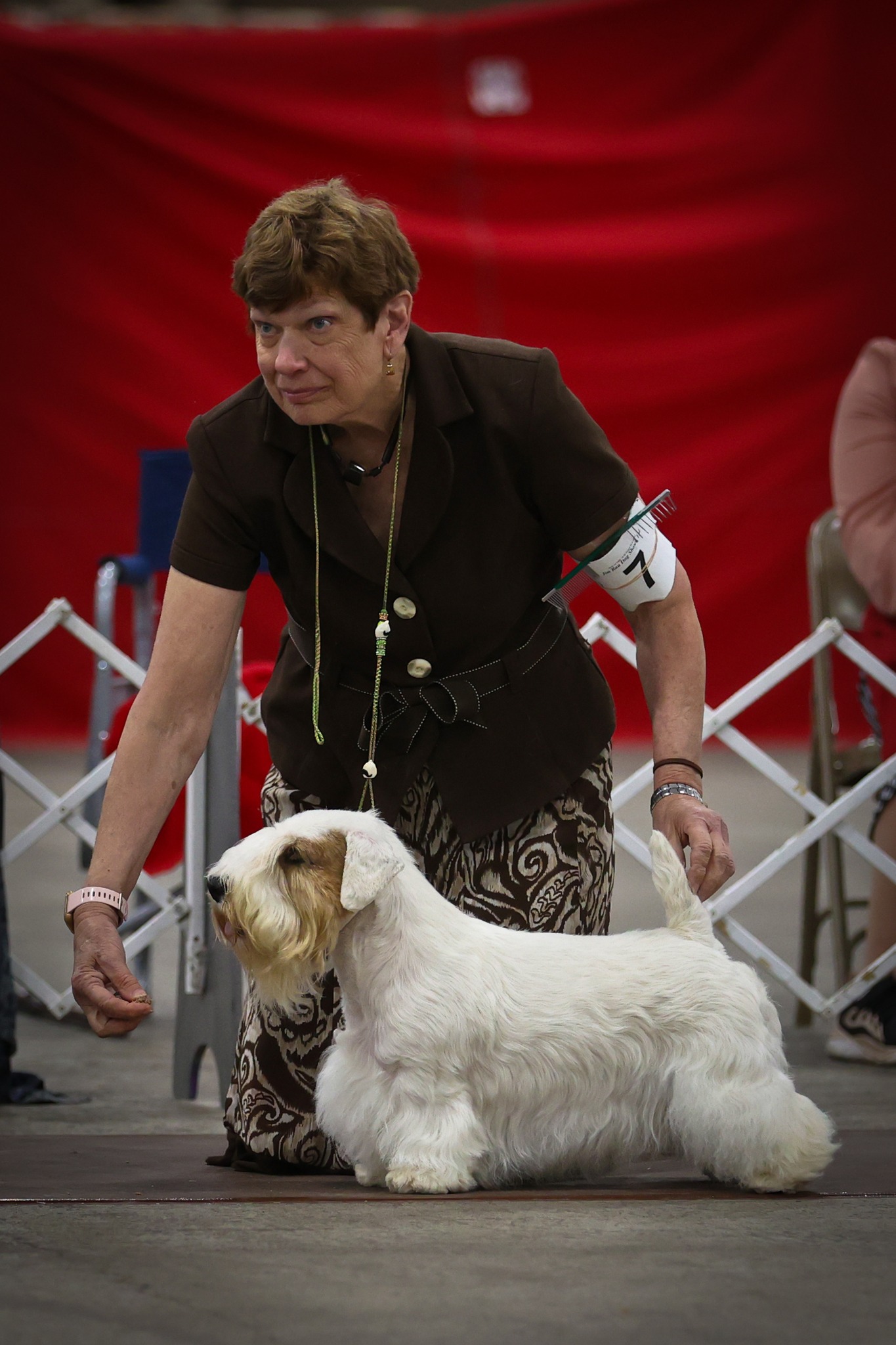
Margery Good with BIS/BISS CH Goodspice Efbe Money Stache
“I entered in obedience, but then I spent my day at the dog show stalking the handlers that were sharing their conformation dogs and trying to learn as much as I possibly could, without getting in their way. Peter Green, Bob and Jane Forsyth. Bill Trainor. People that were at the very top of their careers in those days, and I would spend as many hours as I could watching and trying to learn.
“Well, I watched a lot of their grooming at their setups and how they handled each dog on the tables and putting them on and off the table. how they brushed them, what direction they use or what tools they picked up. Except for the Forsyths, the handlers were only showing like 6-7 dogs in the show and they’d do some trimming the shows.
“So I’d watch how they tweak the trim before they take them in the ring. And then with like the Afghan hounds and Poodles I watched, how did they brush the hair? How did they pick up the hair they weren’t brushing so that they could get from their skin to the tip of the hair. So I picked up a lot of learning from observing how they prepared the dogs. And then I’d go and watch them actually showing the dog. I actually spent more time behind the scenes than by the rings.
Speaking to the challenge of trimming Sealys, Good said “I do try very hard to breed dogs with coats that normal groomers and average dog owners, if they apply themselves, they can work and have their successful finish to them. I also spend a lot of time helping people at shows or at my place or wherever I am to help them tidy up their trims and show them a new technique that they haven’t tried or encourage them to keep going until they get it right.
“Now that we have things like cell phones, I say take pictures, send me pictures, I will critique your trim. I work with people, they’re 12-15 hours away. If they send me pictures, I will help. And it works.
Sealyham Terriers – Generous, Big Dogs in Small Package
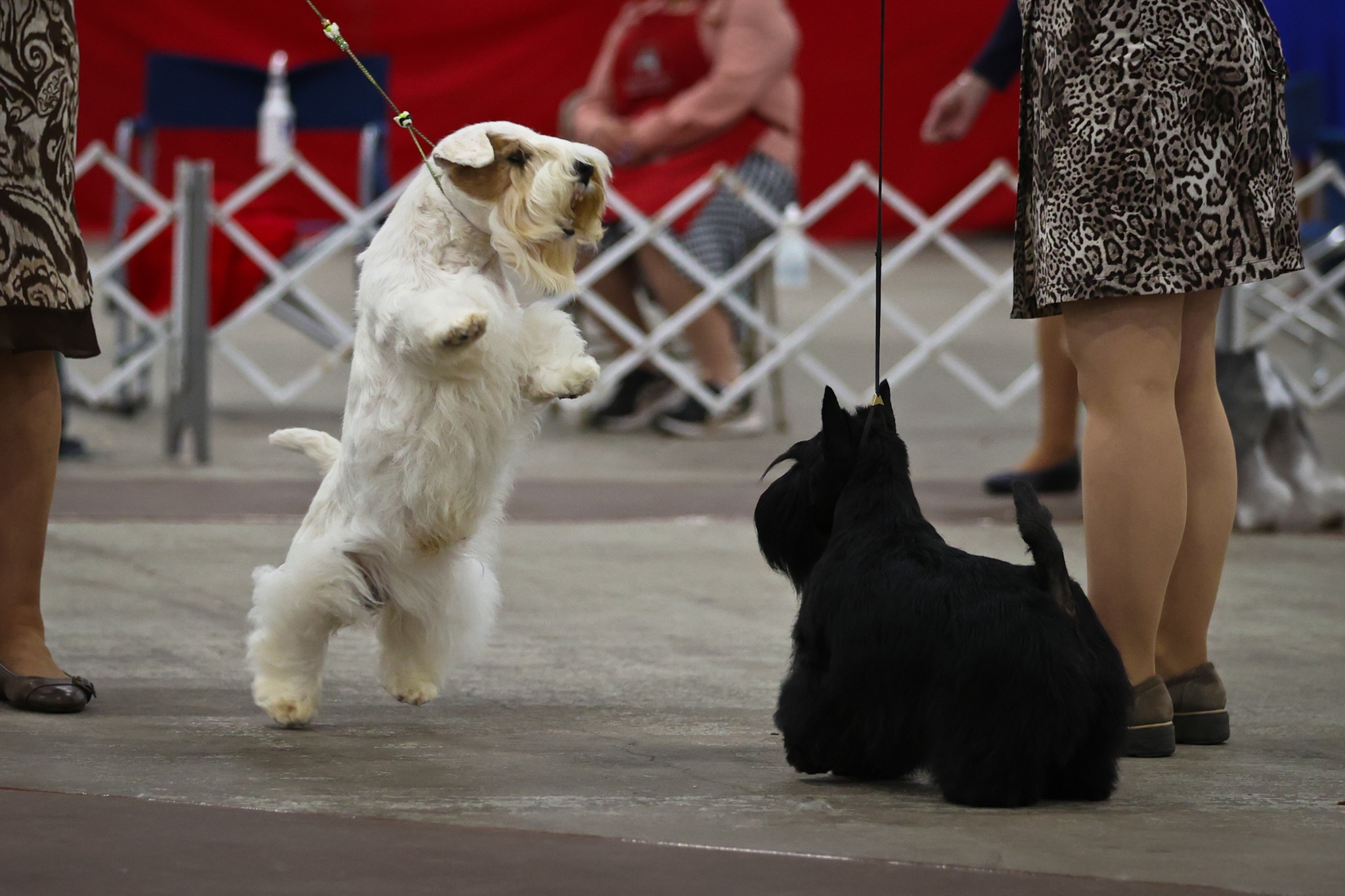
Stache sparring, showing the stand up character of the breed.
“They’re so generous. And all you need to do is ask and they will say what can I do for you. They’re very strong, sturdy, compact little dogs. They are big dogs just in a small package. They have very strong personalities. Their characters are very deep, as opposed to some of the other terrier breeds, whose characters are rather shallow. Which some people like. But it’s not for me. I like the depth of the character that I see in Sealyhams.
Classic Breeding Advice
“(Starting out) I was able to breed forward and not have a lot of faults that I had to breed away from. I had very good virtues to start with. In a breeding program, you need to concentrate virtues and minimize faults when you breed. So, you need to be able to see what a stud dog can give in virtues and what faults you might get and not double on what you have in your female. See what her strengths are and not double on the faults that they have. So, generation after generation, you do that. To the point of Stash, (GCHG CH Goodspice Efbe Money Stache, Terrier Group winner at the 2022 AKCNC) who’s the culmination of 50 years of my breeding.”
Listen to the entire conversation full of passion, insight and charm.
547 – Canine Herpes Virus: Early Detection Saves Puppies
Canine Herpes Virus: Early Detection Saves Puppies
Alaskan Malamute breeder Wendy Corr joins host Laura Reeves to share her story of early detection of Canine Herpes Virus in her pregnant bitch and how she managed the situation to produce healthy puppies. This is the first of a two-part series which also includes an interview with Corr’s lead veterinarian.
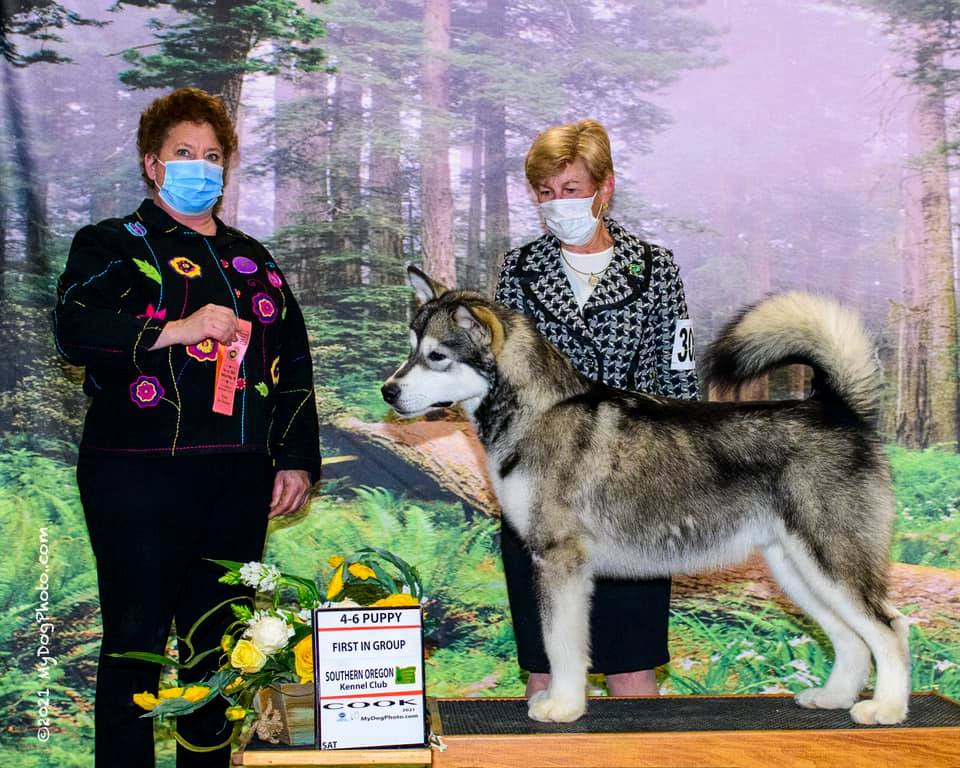
November 2021 4-6 Beginner Puppy. Later, breeder, owner, handler Wendy Corr related his story, told here.
Corr said she had never really thought about CHV much, as a long-time breeder, but had recently heard a presentation on the dangers of the disease to pregnant females. On a whim, she asked her veterinarian, Dr. Bruce Christensen, to pull blood a CHV titer test on her confirmed pregnant 3-year-old Malamute.
She was shocked to hear back a couple weeks later that the bitch had titer levels off the charts.
At the direction of Dr. Christensen and his team at Kokopelli Assisted Reproductive Canine Services in Sacramento, CA, Corr started her bitch on a course of acyclovir, a human anti-viral.
Corr, who is a clinical nurse in human medicine, said she was concerned about potential side effects from the drug, which could include cleft palate, but committed to the treatment with that understanding. She also opted for a C-section, rather than a vaginal whelp, in order to limit the puppies’ exposure to the virus in the dam’s body.
Primary among the handling of the four healthy puppies at birth (none with clefts) was incorporating an incubator to keep their body temperature above 99 degrees, the point at which the virus cannot replicate, for the first 2 ½ weeks. Putting the puppies on to nurse every two hours, monitoring temps and keeping mom and puppies content during that time was a daunting challenge, Corr said.
“We had friends who brought us dinner,” Corr said. “We had people who offered to come in and just sit with the dog so I could sleep or take a shower or we could go grocery shopping.”
The entire process took place during the height of COVID lockdowns, enhancing Corr’s challenges.
Stay tuned next week for insight from Dr. Christensen directly on his experience and recommendations on the topic.
530 – Poodles, Professional Handlers and Public Image
Poodles, Professional Handlers and Public Image
Christian Manelopoulos is back with host Laura Reeves for more Pure Dog Talk on Poodles, Professional Handlers and the sport’s Public Image.
“I think really great people are very generous with their time and advice,” Manelopoulos said. “In the end, the thing we all struggle with is having time to do things. And so when people are generous with that time, you really have to soak that in. But the really great people are willing to do that.
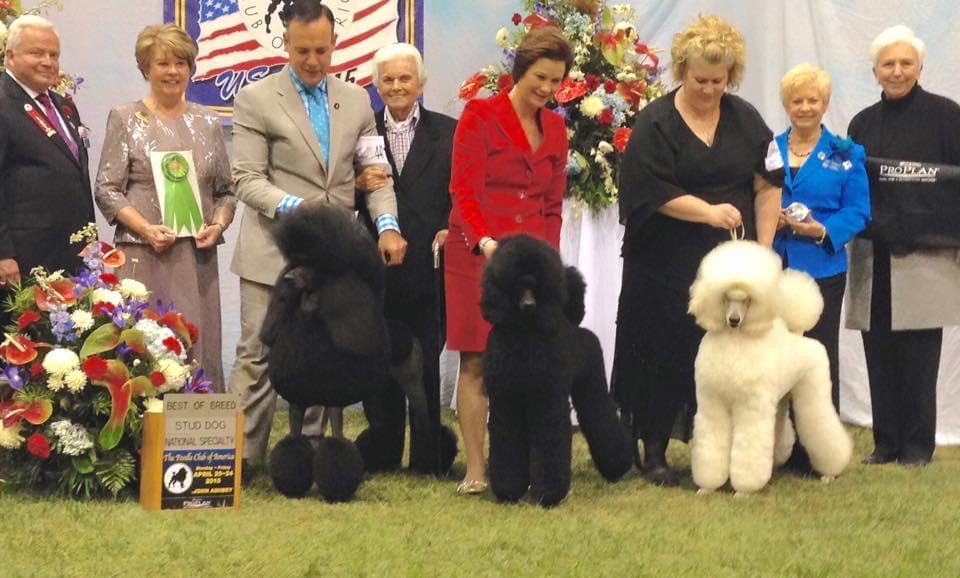
Winning the stud dog class at PCA.
“People think of handlers in one way and breeders another way and that they are two separate things. But they’re very dependent upon one another. I do think people don’t realize how much professional handlers actually influence breeds positively. We always get the negative….
“We’ve seen a rapid decline in big breeding kennels. There’s still a lot of people that breed but when you breed one litter a year or one litter every two years, it’s really not enough. As dog show people, we need to pay a little bit more attention to these kinds of things. We do need people to breed litters of dogs. There’s just not enough dogs out there for the people that want them, especially purebred dogs. But we need to market ourselves correctly and we need to promote the breeds, the dogs, in the correct way.
“I mean, we can’t be elitists. When people come to dog shows and you’re rude to people and you talk to them like they’re idiots, they’re not going to want to come back. We need to be encouraging to people about the dogs. We need to breed healthy dogs. People buy purebred dogs because they want dependability. It’s like what Apple is. You buy an iPhone because it works. You buy a purebred dog because you want to get a poodle that looks like a poodle, acts like a poodle, has a temperament and then is hopefully healthy.
“The first poodles that I bred, I have none of that bloodline in my lines today because of health reasons. So you can’t be afraid to start over. You have to eliminate dogs from your breeding programs and move on. That doesn’t mean you need to eliminate all of them. You have to be diligent in what you do and examine correctly ‘what I can work with, what I can’t work with.’
“We need to promote a positive image of the sport. We see people flying with their fake service dogs and they post videos on Facebook and people talk about how cute it is that you are committing a federal crime. I don’t think that that’s the right message we should send people. You could see why that would come off the wrong way to the general public. We need to self-examine.”


